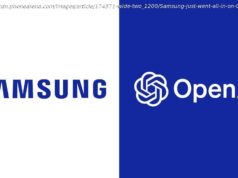Here’s how leaders in financial services, consulting and defense lure the best engineers.
What makes a company a LinkedIn Top Company? Check out our methodology post for the official answer… but for engineers, the answer probably revolves around culture. And I don’t mean the culture that comes in the form of free food or Ping-Pong tables. Like most professionals, engineers want to be challenged and to feel like they’re working with smart peers. I reached out to some of our LinkedIn Top Companies that have a large software engineering presence but aren’t known as traditional „tech companies.“
More from Greg Leffler: What is the 21st-century iInterstate? The Google phishing attack, explained The FCC’s new „net neutrality“ plan is a time warp
Here’s how leaders in financial services, consulting and defense talk about their engineering culture and how they hire.
There are many reasons to be excited about working for a company the size of JPMorgan Chase (think 240,000-plus global employees and over $5 trillion of payments processed every day) , but one specific reason is the chance to work on technology that’s disrupting the financial services industry.
„We’ve always thought of ourselves as a technology company, “ says Dana Deasy, JPMorgan Chase’s Global Chief Information Officer. „We’re looking for strong technical minds who are innovative.“ The scale of Chase (and Deasy’s $9.5 billion budget) enables Deasy’s team to work on a wide variety of projects, including things like blockchain projects, robotics and machine learning.
When I asked Deasy how Chase competes with „pure technology“ companies for talent, he discussed how they work to fight the perception of tech in banking as „non-strategic, back-office cost centers.“ His secret? Have candidates meet a wide variety of employees at different levels so that they get immersed in the bank’s tech culture.
Deasy also discussed the investment they make into training, including specialty programs where top performers are given the chance to rapidly learn a new skill, like AI technology or how to integrate two separate Chase systems, that can then help them grow into a different role.
What sets the management consulting firm apart from technology companies? The real differentiator is the mission-focused aspect of their culture, says Gary Labovich, Booz Allen Hamilton’s Executive Vice President for their Digital Solutions team. In 2015, for example, Booz Allen was named the master integrator for the Healthcare.gov revamp; the ongoing project employs hundreds of engineers who are tackling everything from integrating multiple database environments to huge scale infrastructure.
Beyond the scale of the technical challenge, of course, is the mission behind the work — giving people access to healthcare is „deep, significant public policy work, “ and people who are motivated by having access to that type of work are the ones who succeed at Booz Allen, Labovich says.
Labovich also discussed Booz Allen’s internal training program, known as „Digital Solutions University, “ where employees combine classroom training, web-based programs, and simulations to learn new skills they can use for the next assignment within the company.
Engineers at Booz Allen participate in a process called resource management that helps match projects and opportunities to engineer skills on a regular basis, giving Booz Allen the flexibility to add people to a project or technology that is getting more attention while also giving employees a chance to raise their hand for something new on their next assignment. Additionally, Booz Allen encourages their employees to speak publicly on behalf of the company and to participate in internal hackathons.
It helps to be innovative at the core, says Chris Scalia, Leidos‘ Senior Vice President of Talent Acquisition. The Reston, Va.-based defense company views their ability to technically innovate as a critical aspect of their overall corporate culture, not just an engineering culture or a technology culture, Scalia says. Leidos engineers might work on cybersecurity, electronic health systems, or drones.
When it comes to competing with „pure tech“ companies for engineering talent, Scalia added that it’s the defense work that Leidos does that sets the company apart. Being driven by a mission to help serve Leidos‘ clients, like the U. S. government, is what Leidos uses to seal the deal with candidates who are on the fence about working for them or working for, say, a „unicorn“ tech company.
All of these companies discussed a few things: Making technology a core part of the business and overall culture; providing training and development opportunities to existing engineers, through several different formal and informal programs; and making sure people realize the scale of the problems they’re solving, from both a technological and a mission or customer base perspective.
What’s your take on culture? These companies all are very large and have their own programs and efforts to make them great places to work, but what have you seen work well? What doesn’t work? Tell us your thoughts in the comments below.
If you’d like to learn more about the secret sauce behind how these companies operate with employees spread out around the world, read my other post with the executives, concentrating on how they did distributed technology right.
This article originally appeared on LinkedIn
Greg Leffler is the Senior Editor for Software Engineering and Technology for LinkedIn
Don’t miss:
The 15 hottest tech companies in America, according to LinkedIn
Former Twitter CEO reveals the 2 traits that’ll get you hired by a top company






